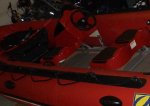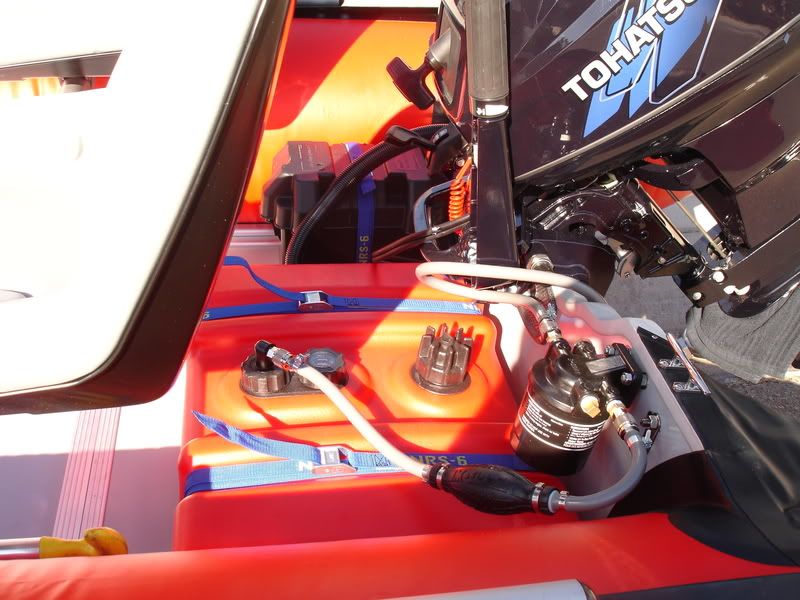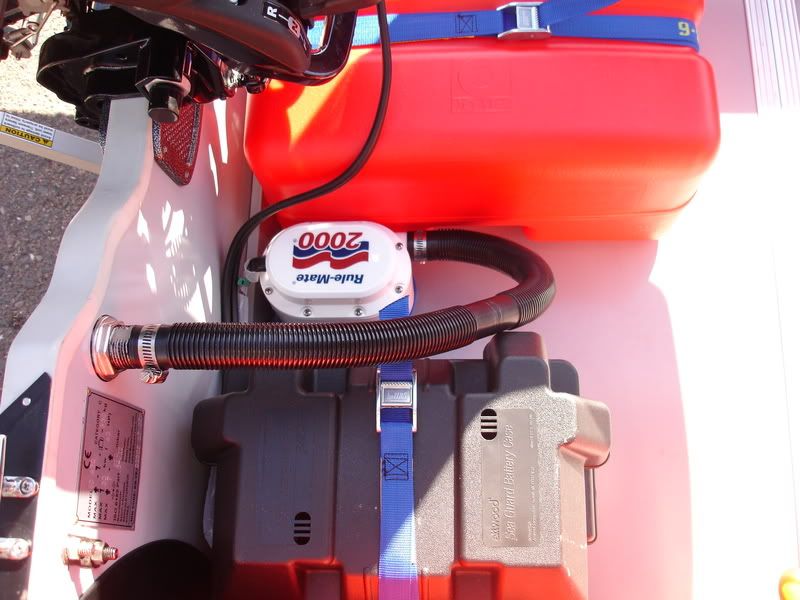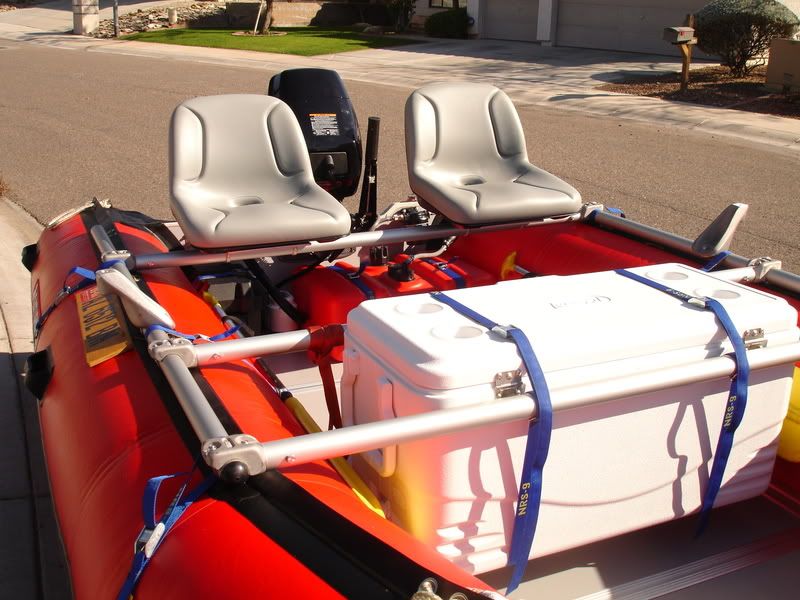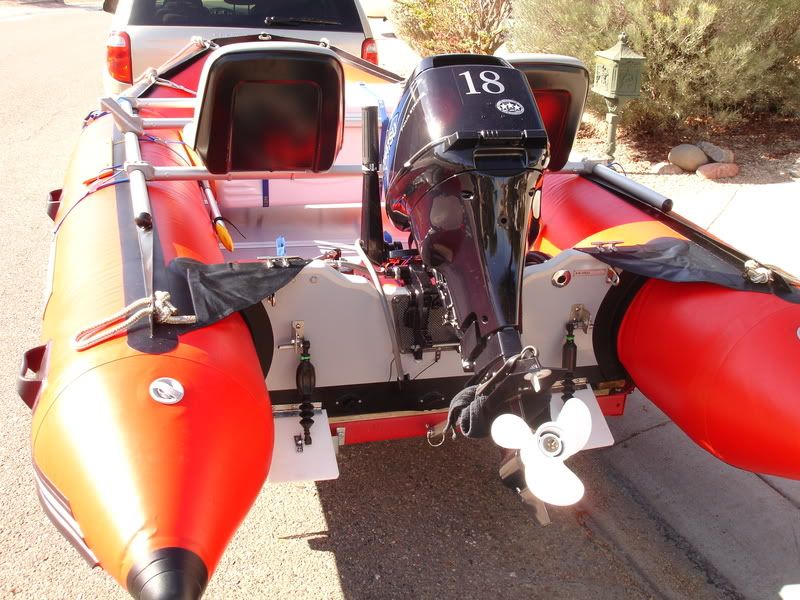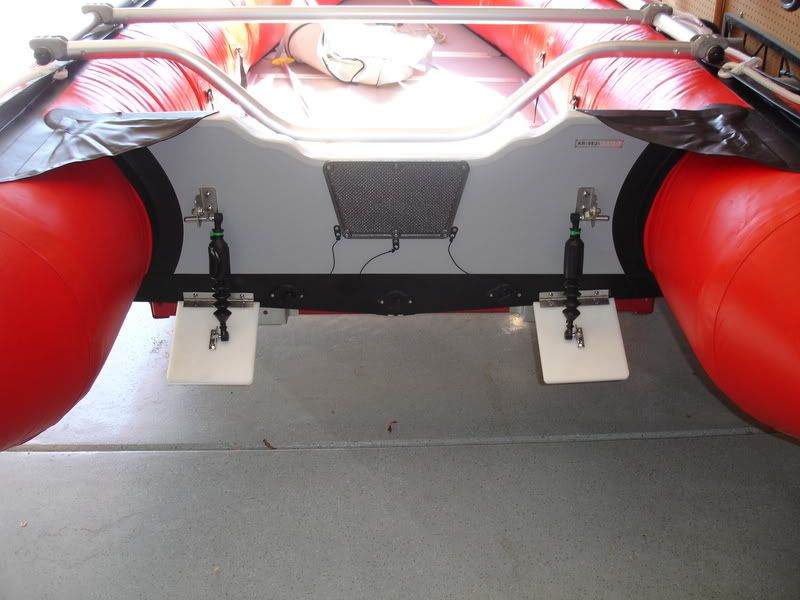Re: My new Mark lll Futura I am so ready for summer
So much of how you fit out your boat should be based on how you intend to use it. A marine battery is a reasonable choice, but I have had battery issues due to my use. I fish and have run down my battery a couple of times running lights and the fishfinder. Starting batteries will not take deep discharges very well. Deep cycle or dual use marine batteries hold up fairly well, but I had premature battery failure due to vibration and shock. My Absorbed Glass Matt battery is dual use and is waaay more resistant to plate separation or damage. Unlike a gel battery the AGM can take a regular charge too. If you are going to be bashing around it is worth consideration. As I travel to remote locations I take my single battery situation seriously and have installed a low voltage disconnect switch. Switches off battery loads before the battery is drained too far. Ensures engine starting. Probably overkill on local waters. Design your systems to your needs. Always carry the optional pull start rope for your outboard (and know how to use it).
Depending on battery and case size you may find the stock zodiac seat a little too low to fit the battery underneath. My current AGM wouldn't quite fit under the aft bench in it's case. Measure carefully or just strap the battery down right up next to the bench. I doubt that you will get both a ten gallon tank and battery under the stock bench/console (if I'm reading your post correctly). I would think that you could have a decent sized custom tank with sloping sides made to fit that space by itself. If you look back at my older posts you will see how I chose to mount my aluminum tank, vent it and attach to ground. The ground wire on an aluminum tank should run directly to the negative battery terminal. It should not piggyback on other wiring and definitely not be routed through any off switch. The biggest advantage to me of the custom tank (other than being out from underfoot) is that I can fill it in the boat at the gas station (being careful to not overfill or spill gas in the boat). Plastic ungrounded tanks should be removed from the boat and filled on the ground. It was hard to lift the full twelve gallon plastic tank back into the boat.
You probably don't need a special rack for skiis or wakeboards. I just strap them down across the bow tubes using rubber straps hooked into d rings. My longboard would be like an airplane wing if I did that (9' 6"). Any rack extending out over the side tubes will appeal to swimmers as a handle. Care (verbal abuse) and attaching on both sides of the bench are necessary.
I used non stainless battery strap hardware for my tank hold down. Will replace someday with stainless footman's straps as corrosion is always an issue. I used a spade bit on the underside of the wood floor section to make a space so the washer and bolt head would be inset. Filled and covered with marine epoxy and sanded smooth. Didn't want to risk abrading my PVC floor. The nuts on the strap side are self locking. All bolts and nuts are stainless. I covered the nuts with a little glue out of my hot glue gun just for toe protection. I encourage everyone to wear some kind of foot protection in the boat, but we enter and exit barefoot a lot so I have tried to minimize the sharp edges on all of my installs. There are plastic battery and fuel tank straps available, but I was not impressed with their strength. When I am operating in nasty surf conditions or crossing bars in Mex I unstrap the battery and strap it back down on top of my bench next to the console. All wiring connections, the battery saver and switches are as high inside the console as allowable and covered. For my use it was necessary to design for possibly getting swamped. Even my tank vent runs up high and has an end valve designed to help minimize water intrusion. A little fore planning when installing your wiring can keep you out of trouble later.
I don't have a fuel water separator installed (just use the filter in my outboard). I have considered it, but I use up my fuel, keep my tanks clean and use a portable fuel water separator filter funnel when using suspect fuel (anywhere in Mex). I believe Drowned Rat has a filter installed on his boat. They are not exactly install and forget. The fully encased filters can become full and you won't know until you have fuel issues. Regular scheduled replacement helps. There are filters with plastic or metal bowls on the bottom that you can drain the water out from. This can extend the life of the filter. I'm still considering adding a fuel water separator inline. They are particulary valuable on boats with internal tanks that have always open vents. On my aluminum tank I have a valve so I can close off the tank and I have not had any internal condensation issues. Once again, base your system on your expected use. If you store fuel for extended periods, leave the boat moored in the water or travel to remote locations a fuel water separator is probably a good idea. Hopefully others will give you more informed advice.
Anytime you plan a new installation or design a new modification you should run a search on the forum regarding that specific topic. Lot's of info stored in past posts! You might also enjoy checking out Ribnet (UK based
www.rib.net/forum/) for interesting posts and more mods to ribs and sibs.




















